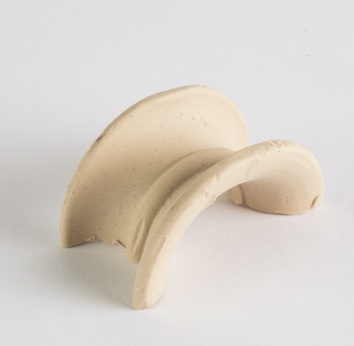Knight Materials
Improving Efficiency and Compliance in Caustic Scrubbers/Absorption Towers

Important Considerations for the Tower Build
Enhancing Mass Transfer Efficiency: Achieving optimal mass transfer efficiency is a primary goal. Mass transfer efficiency refers to the effectiveness of the exchange of substances between a gas and a liquid phase, in this case, the safe absorption of process gases.
Efficient mass transfer directly impacts the tower’s performance, affecting factors such as the subsequent removal of pollutants associated with the manufacturing process. A well-designed tower with high mass transfer efficiency ensures maximum conversion, minimizing emissions, leading to cost savings, environmental compliance and overall processing optimization.
Complete distribution through the tower from the liquid distributors through the packing media is critical to the performance of the absorption/scrubbing tower. Any imbalance can lead to reduced scrubbing efficiency, resulting in environmental non-compliance, unplanned downtime and increased operational costs.
Monitoring Pressure Drop: Teams need to monitor pressure drop to evaluate the performance and reliability of the sulfuric acid absorption tower. Pressure drop impacts process efficiency, residence time, energy consumption, equipment design and safety. A sudden increase in pressure drop can indicate issues like fouling or damage to tower internals, prompting the need for maintenance or cleaning. By regularly monitoring pressure drop, operators can detect problems early, preventing unnecessary downtime and optimizing energy efficiency.
Challenge
 In partnership with Superior Dual Laminate Products (SDL) and Knight Material Technologies (KMT), the defense contractor embarked on a mission to inspect and improve its sulfuric acid absorption towers.
In partnership with Superior Dual Laminate Products (SDL) and Knight Material Technologies (KMT), the defense contractor embarked on a mission to inspect and improve its sulfuric acid absorption towers.
The components or tower internals need to be based on factors including:
- Chemical Compatibility: This is vital when selecting tower internals to ensure they can withstand exposure to corrosive substances present in the process environment.
- Strength and Flex Modulus: The tower internals needed to withstand various structural challenges considering factors like the weight of the packing and the stacking of other components, alongside thermal stresses. These factor into the calculation and allowances for the flex modulus.
- Heat Resistance: Elevated temperatures within chemical processing towers dictate the selection of materials with high heat resistance.
- Weight and Ease of Installation: The weight of tower internals can impact installation, maintenance and overall tower stability.
- Cost-effectiveness: While metal alloys such as Hastelloy® offer a sturdy alternative, high-performance thermoplastics can offer a balance between performance and affordability to optimize overall process economics. Carefully selected polymers can deliver the necessary corrosion resistance, strength and durability.
Working with all these specifications is extremely difficult. When designing for strength, many engineering firms rely on heavy, multi-layered materials, which often add dangerous weight. Selected corrosion materials can be extremely rigid, not allowing for flex.
The team carefully considered these and other specifications for material selection and structural design.
Solution
KMT installs and services custom acid-resistant linings used in highly corrosive processes, particularly in the chemical and mining industries. SDL focuses on Fiberglass Reinforced Plastic (FRP) dual laminate equipment for corrosion protection. Working together, Knight, SDL and their partner companies can supply an unparalleled breadth of solutions for corrosion protection.
First, the team selected Chlorinated Polyvinyl Chloride (CPVC) as the material of choice for various tower internals such as the liquid distributor. The liquid distributor is responsible for ensuring uniform distribution of acid throughout the packing materials. Its function helps maintain efficient mass transfer, optimize chemical reactions, and enhance output and tower performance. These characteristics aid processing efficiency but also enhance environmental compliance.
The selection of materials could have included any of the following:
- CPVC
- Polyvinyl Chloride (PVC)—A viable alternative, although CPVC offers increased corrosion resistance and higher heat deflection temperature.
- Fiberglass Reinforced Plastic (FRP)
- Polypropylene
- Polyvinylidene Fluoride (PVDF)
- Polytetrafluoroethylene (PTFE)
- Perfluoro alkoxy (PFA)
- Metal alloys
The final choice of CPVC was due to its corrosion resistance, strength and heat-resistant properties to ensure the internals could withstand the harsh environment. The lightweight nature of the material, with thermoplastics weighing at least a third less than comparable metal alloys, further simplified installation and maintenance procedures.
The cost differential is staggering, with a high-performance thermoplastic coming in drastically less expensive than a metal alloy. This choice does not diminish operational efficiency and still lends the system a lengthy service lifespan.
Support mechanisms, including support beams and structural elements, were strategically integrated to uphold the weight of the internals and packing materials while also maintaining their positioning to aid with efficient acid absorption.
Knight FLEXISADDLE® Ceramic Random Packing supplied a highly effective surface area and low resistance to airflow in this mass transfer operation.


